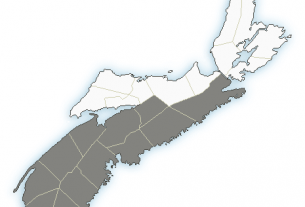**** Info via Environment Canada
Canada’s unprecedented wildfire season via Environment Canada
Canada’s wildfire season of 2023 has shattered records across the country.
Prolonged spells of record-breaking hot, dry weather in many regions from coast to coast fueled over 6,600 wildfires, burning an astonishing 18.5 million hectares of wildland – or nearly 5% of all forest area in Canada. This is an area larger than all of New Brunswick and Newfoundland combined, with nearly nine times the national average of area burned in 2023.
British Columbia, Alberta, Quebec, and Nova Scotia all saw record-breaking wildfires. These large fires produced thick smoke that impacted the air quality for millions across North America, causing widespread smoky skies and the appearance of purple suns from the Canadian Maritimes to western Europe.
The largest single burning day occurred on September 22 in western Canada, when over 700,000 hectares burned. This triggered rare, late-season pyrocumulonimbus clouds in a year that had already seen a record number of these fire-generated thunderstorms over intense wildfires across Canada.
Pyrocumulus clouds near Brazeau Dam, Alberta in May 2023. Credit: Kyle Brittain.
Devastating impacts to communities
Wildfires threatened major cities, including Halifax, Kelowna, and Yellowknife, and tens of thousands of residents were placed on evacuation orders and alerts, with Yellowknife being entirely evacuated in late August. Nova Scotia, Alberta, Northwest Territories, and British Columbia all suffered numerous structural losses. Wildfire agencies, with help from thousands of local and international firefighters, worked relentlessly to contain the fires. Tragically, six people, including four wildland firefighters, lost their lives.
Kelowna residents watch a wildfire burn across Lake Okanagan on August 17, 2023. Credit: Kyle Brittain.
Looking at the big picture
While lightning-started fires make up less than half of all wildfires in Canada, they are responsible for over 80% of the total area burned each year. This is mainly because they occur in remote areas. Even though the overall number of wildfires has been decreasing in Canada in recent decades, the overall annual area burned continues to increase.
A warming climate lengthens wildfire seasons while also making lightning more likely, and increasing spells of hot, dry weather act to draw moisture out of vegetation, making forests and wildlands more flammable across Canada.




